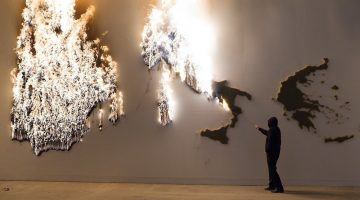 Hal Foster in Lit Hub
Hal Foster in Lit Hub
I suck at predictions. Surely with the financial meltdown in 2008 the art market would crash and the art world would be transformed. Wrong. Surely the Occupy movement would prompt museum directors to rethink excessive reliance on plutocratic patrons. Wrong again. I could list other failed forecasts, but maybe these are enough to suggest why even I don’t listen to me anymore. So please don’t ask me what lies ahead for the art world if and when Covid-19 loosens its grip. I haven’t a clue.
I do have a few thoughts, though, on what has happened lately; that’s the subject of my book What Comes After Farce? Art and Criticism as a Time of Debacle. The current state of emergency didn’t begin in March 2020; it runs back to September 2001. Since 9/11, in the US and elsewhere, we have lived in a world where the rule of law is sometimes suspended and often spotty, in ways that have put countless people at varying degrees of risk. The virus has just made this all the more blatant.
Historically, the avant-garde aimed to contest the oppressive presence of law, whether that law was understood as artistic, social, political, or all three at once. But how are artists, writers, and others to respond when law becomes highly erratic, arbitrarily enforced one moment and just as arbitrarily absent the next? How to create, how to survive, in a state of emergency?
More here.
